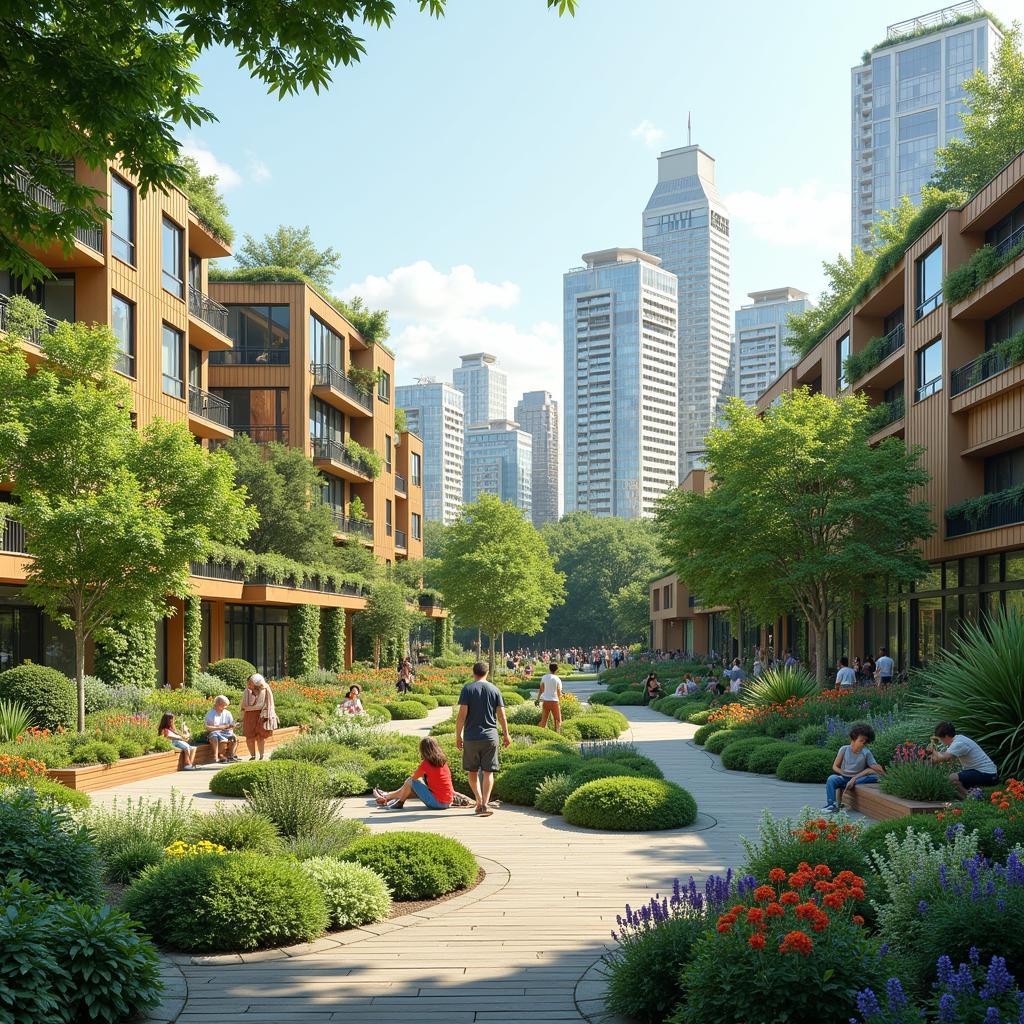A Biopark Society envisions a world where humans and nature thrive in a symbiotic relationship. It goes beyond the traditional concept of a park by integrating biodiversity conservation, sustainable practices, and community engagement. This unique approach fosters a deep appreciation for the natural world while promoting responsible stewardship for generations to come.
Redefining the Urban Landscape: What is a Biopark Society?
Imagine a cityscape interspersed with vibrant green spaces, teeming with life. This is one of the key characteristics of a biopark society – the seamless integration of natural elements into urban environments. These spaces not only provide sanctuary for diverse flora and fauna but also offer numerous benefits to city dwellers.
 Biopark cityscape
Biopark cityscape
Pillars of a Biopark Society
A successful biopark society is built on several core principles:
1. Biodiversity Conservation: Protecting and restoring natural habitats within and around urban areas is crucial. This includes creating corridors for wildlife movement, preserving native plant species, and minimizing habitat fragmentation.
2. Sustainable Practices: Embracing renewable energy sources, implementing efficient waste management systems, and promoting sustainable transportation options are essential for minimizing the ecological footprint of a biopark society.
3. Community Engagement: Involving local communities in the planning, development, and management of bioparks is vital. This fosters a sense of ownership, encourages participation in conservation efforts, and promotes environmental awareness.
Benefits of Embracing a Biopark Society
The positive impacts of transitioning towards a biopark society are multifaceted:
-
Enhanced Well-being: Access to green spaces reduces stress, improves air quality, and promotes physical activity, leading to healthier and happier citizens.
-
Climate Change Mitigation: Bioparks act as carbon sinks, absorbing harmful greenhouse gases and helping to combat climate change.
-
Biodiversity Preservation: By creating safe havens for wildlife, bioparks play a crucial role in protecting endangered species and maintaining ecological balance.
Challenges and Opportunities
While the concept of a biopark society holds immense promise, there are challenges to overcome:
-
Urban Sprawl: Rapid urbanization can encroach upon valuable natural areas. Careful planning and sustainable land management practices are crucial to prevent this.
-
Funding and Resources: Creating and maintaining bioparks require significant financial investment and ongoing support.
-
Public Awareness: Educating the public about the importance of biodiversity conservation and sustainable living is essential for fostering a biopark society.
A Vision for the Future
Despite these challenges, the vision of a biopark society offers a beacon of hope. By embracing the principles of sustainability, community engagement, and a deep respect for nature, we can create thriving urban spaces that benefit both people and the planet.
Conclusion
The concept of a biopark society presents a compelling roadmap for a future where humans and nature coexist harmoniously. By prioritizing biodiversity conservation, sustainable practices, and community engagement, we can create resilient and flourishing cities that serve as models for a brighter future.